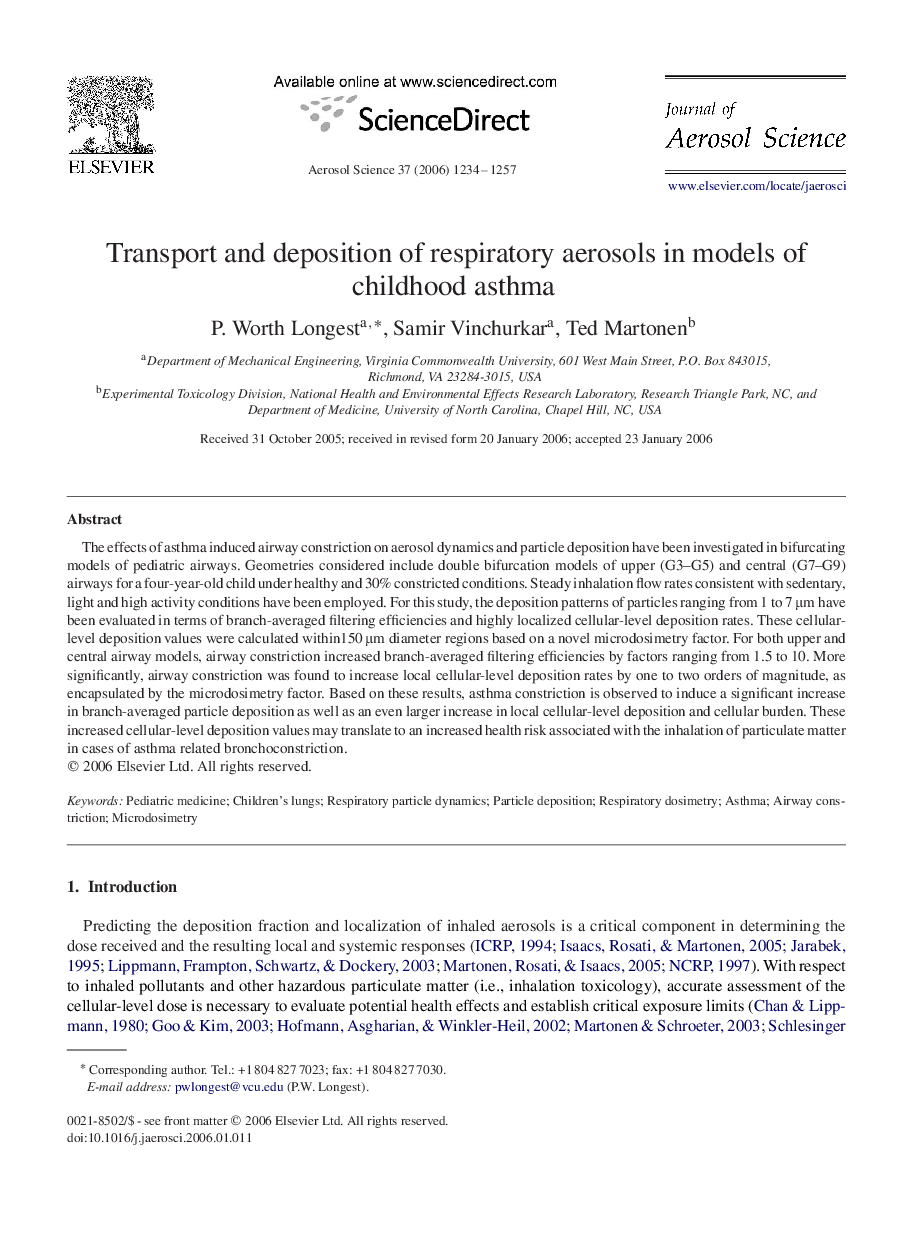| Article ID | Journal | Published Year | Pages | File Type |
|---|---|---|---|---|
| 4453283 | Journal of Aerosol Science | 2006 | 24 Pages |
The effects of asthma induced airway constriction on aerosol dynamics and particle deposition have been investigated in bifurcating models of pediatric airways. Geometries considered include double bifurcation models of upper (G3–G5) and central (G7–G9) airways for a four-year-old child under healthy and 30% constricted conditions. Steady inhalation flow rates consistent with sedentary, light and high activity conditions have been employed. For this study, the deposition patterns of particles ranging from 1 to 7μm have been evaluated in terms of branch-averaged filtering efficiencies and highly localized cellular-level deposition rates. These cellular-level deposition values were calculated within150μm diameter regions based on a novel microdosimetry factor. For both upper and central airway models, airway constriction increased branch-averaged filtering efficiencies by factors ranging from 1.5 to 10. More significantly, airway constriction was found to increase local cellular-level deposition rates by one to two orders of magnitude, as encapsulated by the microdosimetry factor. Based on these results, asthma constriction is observed to induce a significant increase in branch-averaged particle deposition as well as an even larger increase in local cellular-level deposition and cellular burden. These increased cellular-level deposition values may translate to an increased health risk associated with the inhalation of particulate matter in cases of asthma related bronchoconstriction.
